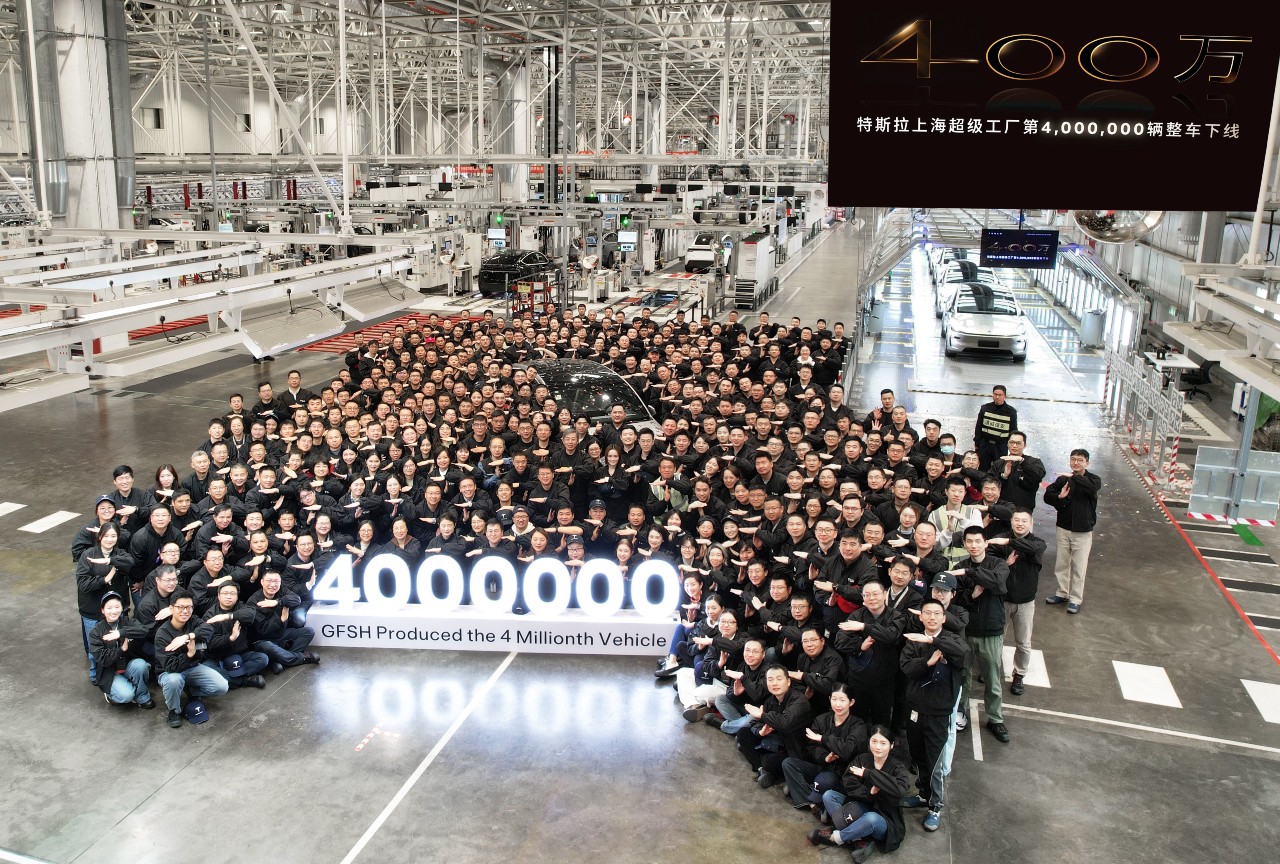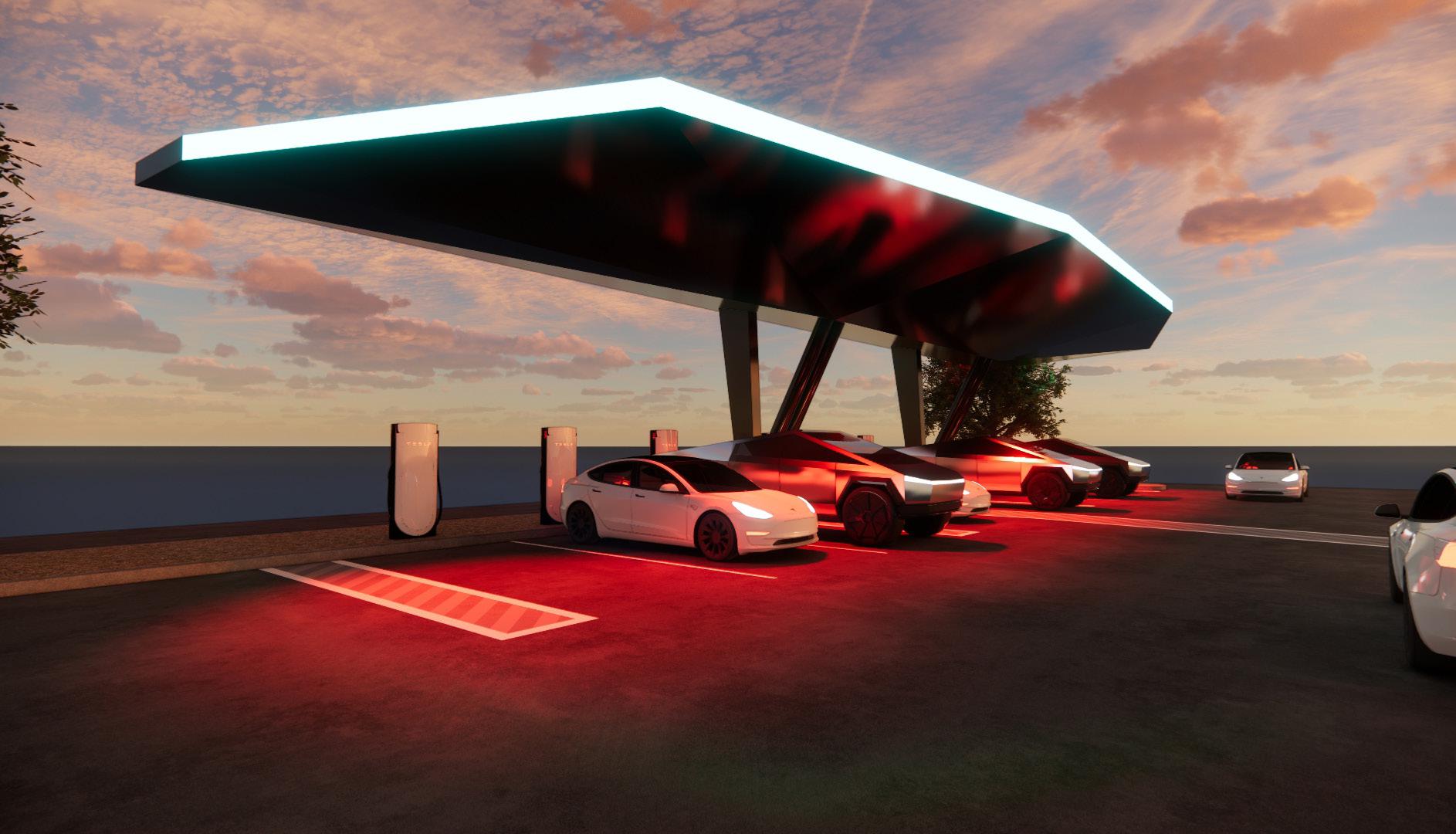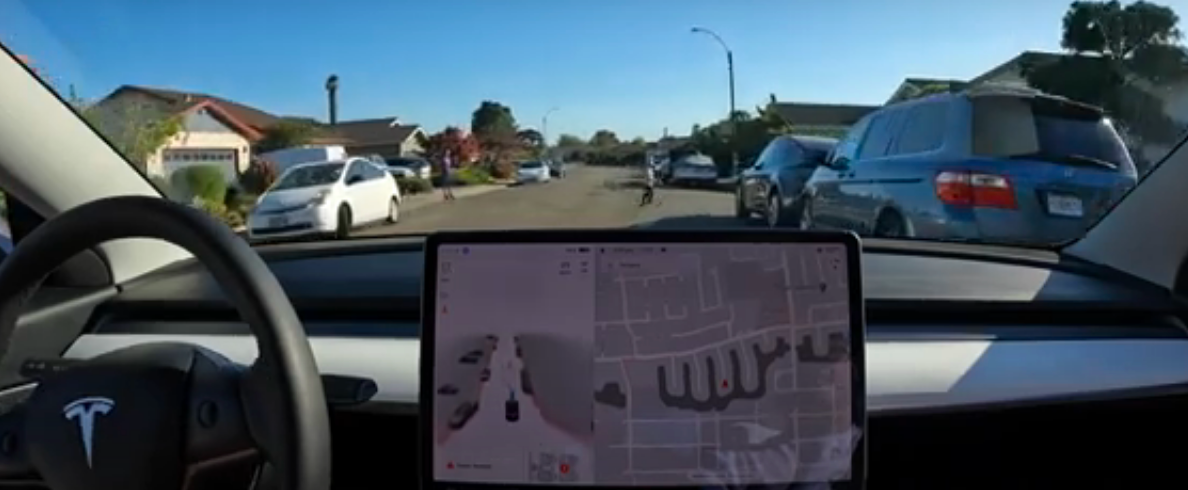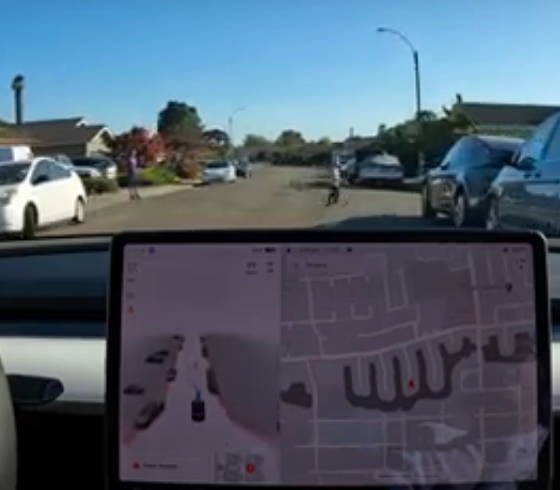It turns out that Tesla’s FSD Bet actually does stop for kids and pedestrians as demonstrated in a video with both a mannequin and an actual child. Recently, the founder of the Dawn Project who is also the CEO of Green Hills Software, which makes automated driving systems, Dan O’Dowd, claimed that Tesla’s FSD Beta did not stop for a child-sized mannequin. This led to a mainstream media storm against Tesla and its life-saving technology.
Tesla owner and FSD Beta Tester, @WholeMarsBlog asked if there were anyone in the Bay Area with a child who could run in front of his car while FSD Beta was engaged. Many took this as a joke, however, The Verge published an open letter to @WholeMarsBlog asking him not to do this.
It turned out that there was someone in the Bay Area willing to allow his child to put Tesla’s FSD Beta to the ultimate test. And it should be noted that the person who allowed this was the driver during the test.
In a Twitter DM, @WholeMarsBlog told me:
“Our tests showed that Tesla Full Self-Driving Beta has no problem detecting pedestrians of all ages. As long as the driver is paying attention, which the system ensures, there is no risk to pedestrians even in the event that the software fails to detect them.”
“This is driver assistance and is not expected to be perfect. It sickens me that Dan O’Dowd would push harmful misinformation to benefit himself financially. He should be charged criminally for false advertising, along with any stations that ran his ads. I don’t have millions to spend on ads like Dan, so please share the video on social media so that everyone who saw Dan’s ad can see our test too.”
Tesla FSD Beta doesn’t hit the mannequin or the child.
In a series of tests involving a child-sized mannequin dressed up and later on a child, Tesla’s FSD Beta proves to not do as O’Dowd claimed it would do.
During the first test, the mannequin was standing in the middle of the street and the car wouldn’t move once FSD Beta was turned on. After moving the mannequin further down the road, the group engaged FSD Beta and it slowly began to move forward.
Once it got closer to the mannequin, it slowed down and came to a complete stop. @WholeMarsBlog showed a detailed look at the screen which showed that Tesla’s FSD Beta detected a pedestrian in the street. It should be noted that, unlike O’Dowd’s video, there were no cones on either side of the vehicle blocking the car from moving around the mannequin.
In the next test, they moved the mannequin a little to the right. The vehicle not only recognized that there was a pedestrian in the street but easily moved around it safely.
Testing Tesla’s FSD Beta with People
In the next series of tests, one of the members of the group, Alvey, participated. Alvey stood in the middle of the street and FSD Beta immediately recognized Alvey as a pedestrian and came to a complete stop at a safe distance. Next up, Alvey walks in front of the car as it’s driving and the car immediately stopped.
In the next test, Tad Park, the CEO of Volt Equity took the driver’s seat. Tad said that he trusted the system enough and has tried FSD Beta previously.
“I would trust my kids’ lives with it and so I’m very confident that it’s going to detect my kids. And then, I’m also in control of the vehicle so I can brake at any time.”
Not only does Tesla’s FSD Beta detect Tad’s son, but it stopped for him. In the next test, Tad’s son crossed the street in front of the moving vehicle. Again, FSD Beta recognized what was happening and reacted accordingly. It slowed down and @WholeMarsBlog pointed out that it waited for him to cross and then continued on.
Attempting to run the mannequin over at a higher speed
The next test was for them to run the mannequin over at a higher speed. They moved it far enough that it was almost out of view but Tesla Vision still detected it. They accelerated to 40 miles per hour but instead of hitting the mannequin, FSD Beta slowed down and moved over to the right.
“It’s not like the commercials you see on TV.”
The video disproves the claim that Tesla FSD Beta will hit kids and do so repeatedly. You can watch it below.
https://www.youtube.com/watch?v=Fu4ZEnIwYZI
Disclaimer: Johnna is long Tesla.
I’d love to hear from you! If you have any comments, concerns, or see a typo, you can email me at johnna@teslarati.com. You can also reach me on Twitter @JohnnaCrider1

News
Tesla announces major milestone at Gigafactory Shanghai
First deliveries started in December 2019, with the first units being given to employees. By the end of 2020, the plant was building cars at a run rate of around 150,000 vehicles annually.

Tesla has announced a major milestone at its Chinese manufacturing facility, Gigafactory Shanghai, confirming on Monday that it had built its four millionth vehicle.
Tesla Gigafactory Shanghai first started building cars back in October 2019 with Model 3 assembly, just ten months after the company broke ground on the plant’s 86-hectare piece of land.
First deliveries started in December 2019, with the first units being given to employees. By the end of 2020, the plant was building cars at a run rate of around 150,000 vehicles annually. Production continued to ramp up, and by September 2023, less than three years after it started building Tesla’s EVs, it had built its two millionth vehicle.
Fast forward to December 2025, and Tesla has confirmed that four million cars have rolled off of production lines at the plant, a major milestone in the six short years it has been active:
Produced our 4 millionth vehicle at Gigafactory Shanghai🎉
Thanks to all our owners and supporters❤️ pic.twitter.com/DayVXUr220— Tesla Asia (@Tesla_Asia) December 8, 2025
The capacity at Giga Shanghai is exceeding 950,000 vehicles per year, and this year, the company has delivered 675,000 cars through the first three quarters. It is also the only plant to manufacture the Model Y L, a longer wheel-based configuration of the all-electric crossover that is exclusive to the Chinese market.
Gigafactory Shanghai’s four million cars have not all stayed within the domestic market, either. For a considerable period, the factory was exporting a significant portion of its monthly production to Europe, helping Gigafactory Berlin supplement some Model Y volume and all of its Model 3 deliveries. This is due to the Berlin plant’s exclusive production plans for the Model 3.
The site is one of the most crucial in the company’s global plans, and Gigafactory Shanghai’s incredible pace, which has led to four million production units in just about six years. It’s fair to say that it won’t be long until we’re seeing Tesla celebrate the plant’s five millionth vehicle produced, which should happen sometime late next year or in early 2027, based on its current manufacturing pace.
The company also builds the Megapack on the property in an adjacent Megafactory.
News
Tesla gamifies Supercharging with new ‘Charging Passport’
It will also include things like badges for special charging spots, among other metrics that will show all of the different places people have traveled to plug in for range.

Tesla is gamifying its Supercharging experience by offering a new “Charging Passport,” hoping to add a new layer to the ownership experience.
While it is not part of the Holiday Update, it is rolling out around the same time and offers a handful of cool new features.
Tesla’s Charging Passport will be available within the smartphone app and will give a yearly summary of your charging experience, helping encapsulate your travel for that year.
It will also include things like badges for special charging spots, among other metrics that will show all of the different places people have traveled to plug in for range.
Tesla has just introduced “Charging Passport,” a new yearly summary of your charging.
• Charging badges: Iconic Charging badge (for visiting places like the Tesla Diner, Oasis Supercharger, etc), Explorer badge, green saver badge, etc.
• Total unique Superchargers visited
•… pic.twitter.com/c1DHTWXpj7— Sawyer Merritt (@SawyerMerritt) December 8, 2025
Tesla will include the following metrics within the new Charging Passport option within the Tesla app:
- Charging badges: Iconic charging badges for visiting places like the Tesla Diner, Oasis Supercharger, etc., Explorer Badge, and more
- Total Unique Superchargers Visited
- Total Charging Sessions
- Total Miles Added during Charging Sessions
- Top Charging Day
- Longest Trip
- Favorite Charging Locations
This will give people a unique way to see their travels throughout the year, and although it is not necessarily something that is needed or adds any genuine value, it is something that many owners will like to look back on. After all, things like Spotify Wrapped and Apple Music Replay have been a great way for people to see what music they listened to throughout the year.
This is essentially Tesla’s version of that.
With a handful of unique Superchargers already active, Tesla is also building some new ones, like a UFO-inspired location in New Mexico, near Roswell.
Tesla is building a new UFO-inspired Supercharger in the heart of Alien country
News
Tesla launches its coolest gift idea ever just a few weeks after it was announced
“Gift one month of Full Self-Driving (Supervised), which allows the vehicle to drive itself almost anywhere with minimal intervention.”

Tesla has launched its coolest gift idea ever, just a few weeks after it was announced.
Tesla is now giving owners the opportunity to gift Full Self-Driving for one month to friends or family through a new gifting program that was suggested to the company last month.
The program will enable people to send a fellow Tesla owner one month of the company’s semi-autonomous driving software, helping them to experience the Full Self-Driving suite and potentially help Tesla gain them as a subscriber of the program, or even an outright purchase.
Tesla is going to allow owners to purchase an FSD Subscription for another owner for different month options
You’ll be able to gift FSD to someone! https://t.co/V29dhf5URj
— TESLARATI (@Teslarati) November 3, 2025
Tesla has officially launched the program on its Shop. Sending one month of Full Self-Driving costs $112:
“Gift one month of Full Self-Driving (Supervised), which allows the vehicle to drive itself almost anywhere with minimal intervention. All sales are final. Can only be purchased and redeemed in the U.S. This gift card is valued at $112.00 and is intended to cover the price of one month of FSD (Supervised), including up to 13% sales tax. It is not guaranteed to cover the full monthly price if pricing or tax rates change. This gift card can be stored in Tesla Wallet and redeemed toward FSD (Supervised) or any other Tesla product or service that accepts gift card payments.”
Tesla has done a great job of expanding Full Self-Driving access over the past few years, especially by offering things like the Subscription program, free trials through referrals, and now this gift card program.
Gifting Full Self-Driving is another iteration of Tesla’s “butts in seats” strategy, which is its belief that it can flip consumers to its vehicles and products by simply letting people experience them.
There is also a reason behind pushing Full Self-Driving so hard, and it has to do with CEO Elon Musk’s compensation package. One tranche requires Musk to achieve a certain number of active paid Full Self-Driving subscriptions.
More people who try the suite are likely to pay for it over the long term.










